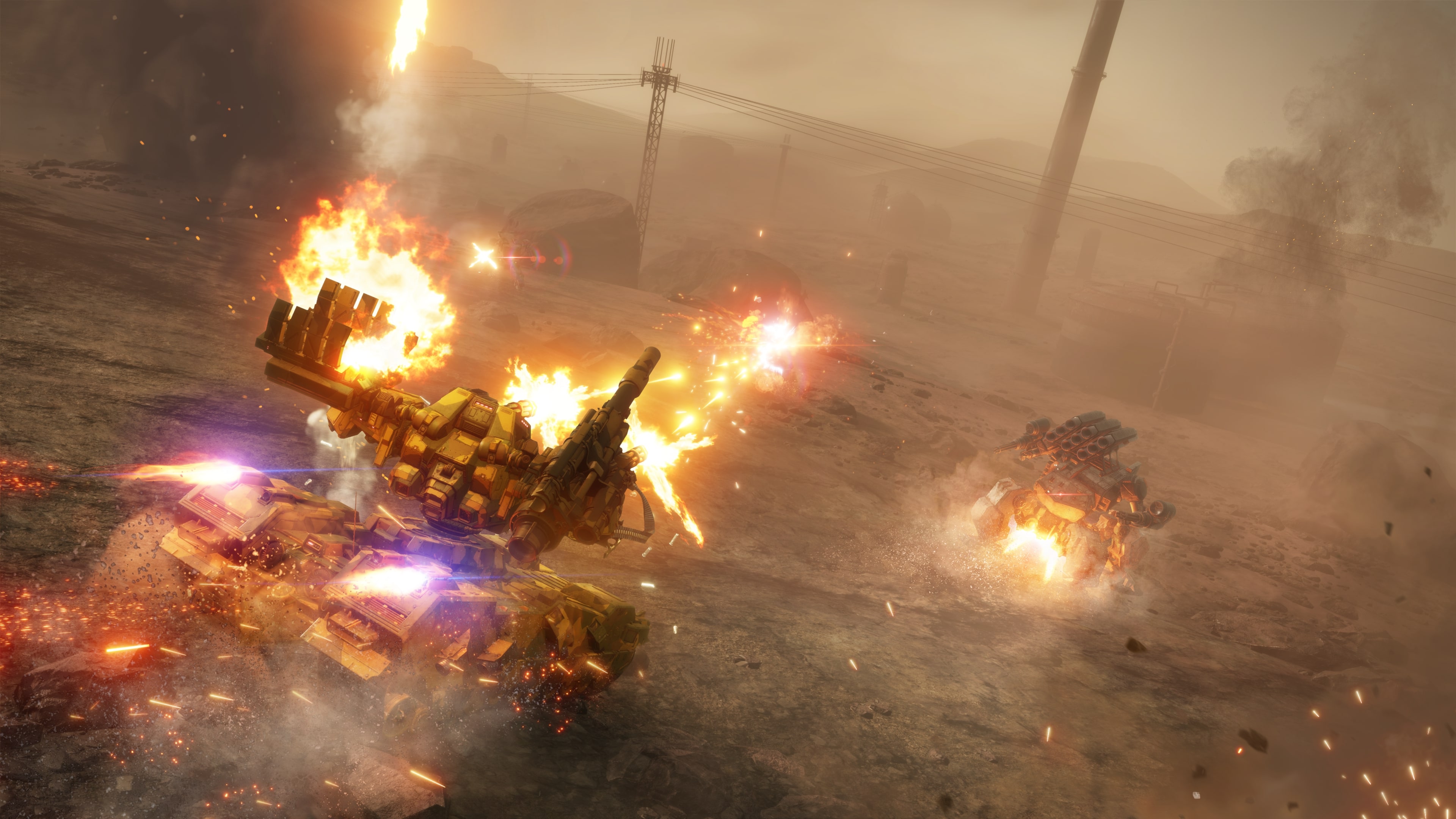TechRadar Verdict
Armored Core 6: Fire of Rubicon offers slick and well-polished mech battling fundamentals, diluted by the inclusion of ill-fitting soulsborne mechanics that don’t compliment the mech pilot fantasy. Though there’s much to enjoy for fans of the series, newcomers will be met with a lopsided experience that doesn’t quite capture the full potential of the Armored Core series.
Pros
- +
Responsive and satisfying combat
- +
Deep mech customization
- +
Exciting and varied missions
Cons
- -
Unsatisfying set piece boss encounters
- -
Jarring inclusion of soulsborne mechanics
Why you can trust TechRadar
Platform reviewed: PC
Available on: PS5, PS4, Xbox Series X|S, Xbox One, and PC
Release date: August 25, 2023
Armored Core6: Fires of Rubicon opens with flair. The default mech you’re given for the prologue handles responsively with fluidity and grace and you spend the majority of the mission zipping between smaller enemy mechs, shredding them between machine gun fire and a big sword. Eventually, however, you come to the set-piece encounter: a large enemy gunship. It’s here that the game begins to show its flaws.
A tough encounter designed to teach the value of dodging, as well as how to use the stagger mechanic, the gunship battle could have been a great opportunity for a spectacle. Instead, you battle the flying leviathan in an arena flanked by restrictive invisible walls. While charging the nose of the gunship and hitting it with your energy sword is fun the first couple of times, the engagement quickly becomes a punishing slog, sitting at odds with the earlier fast-paced combat.
This contrast is indicative of Armored Core 6’s shortcomings. Despite an impressive grasp of fundamentals, FromSoftware’s latest offering shoots itself in the foot with disappointing regularity, diluting its fluid, well-build mech battling mechanics with stolid boss fights that feel like unfair slogs.
FromSoftware’s latest offering shoots itself in the foot with disappointing regularity
For the uninitiated, the Armored Core series predates FromSoftware’s more recent soulsborne projects - the likes of Dark Souls and Elden Ring - by some margin with the first Armored Core releasing on PlayStation back in 1997. It’s been over a decade since the release of Armored Core 5, the last installment in the series. With this in mind, Armored Core 6 has the unenviable task of appealing both to fans of the series as well as newer FromSoftware fans brought into the fold by the studio’s soulsborne successes.
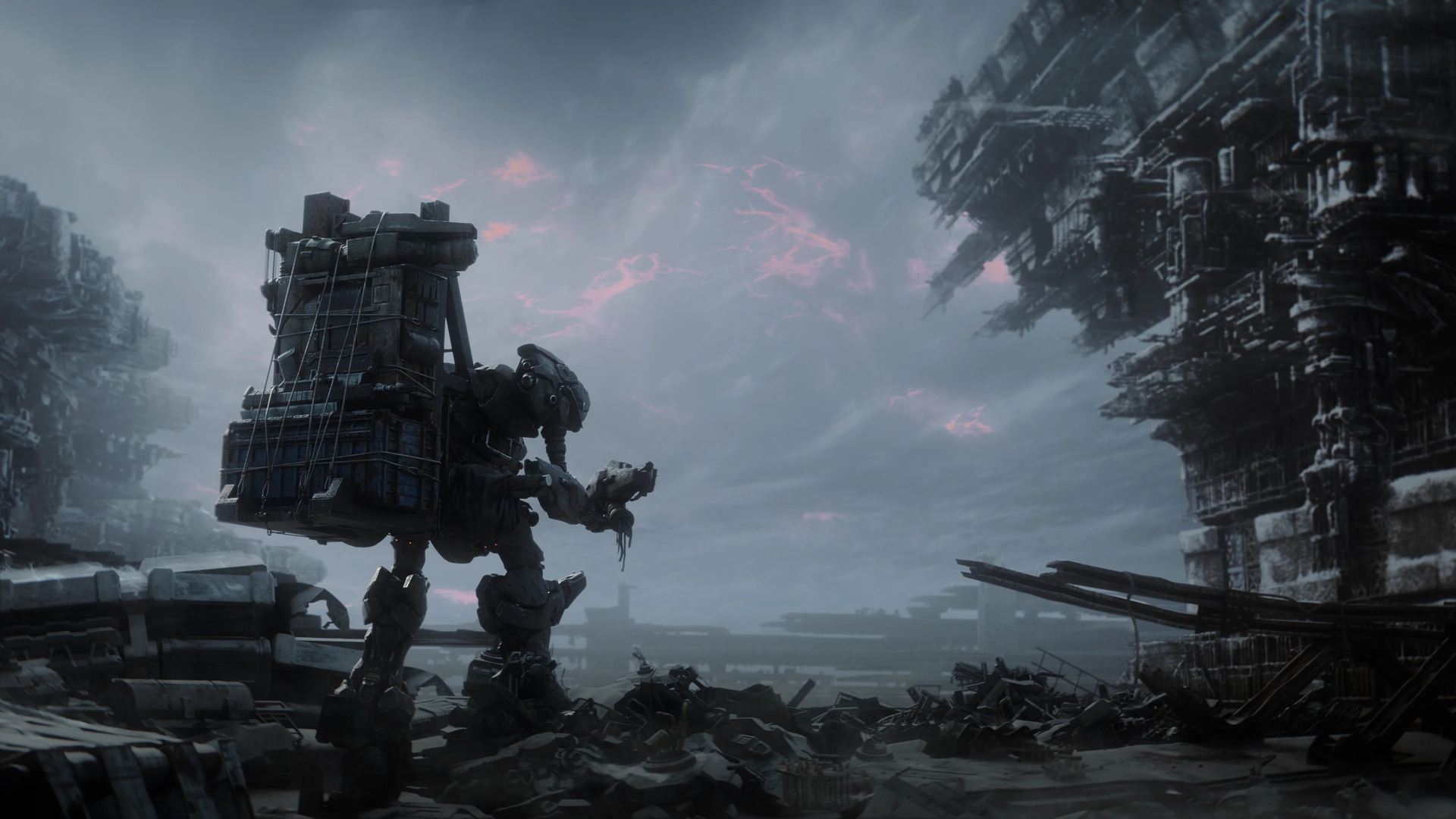
The Armored Core games are third-person mech battlers that deliver on the mech pilot fantasy while offering a strong emphasis on customization. You go out on missions, earn money and return to the hangar where you can upgrade and tweak your mech before going out again. There’s a story, sure, but it’s always taken a backseat to this satisfying loop. While Armored Core 6 does an impressive job of carrying this torch in many regards, this classic formula finds itself diluted by the addition of design philosophies inherited from the soulsborne genre.
As expected, Armored Core 6’s story is little more than a backdrop for the mech battling escapades - a task it performs well, offering a bleak and minimalist survey of a corporate dystopia in the far future. While there are some elements of intrigue, these very much take a backseat to the action.
And there is plenty of action to be found, especially when it comes to the game’s sense of scale. Even the hangar in Armored Core 6 gives a real sense of the immensity of your mech of choice. The environments, too, capitalize on a futuristic industrial aesthetic in order to convey the idea of combat between soldiers the size of buildings.
Sign up for breaking news, reviews, opinion, top tech deals, and more.
Fearful asymmetry
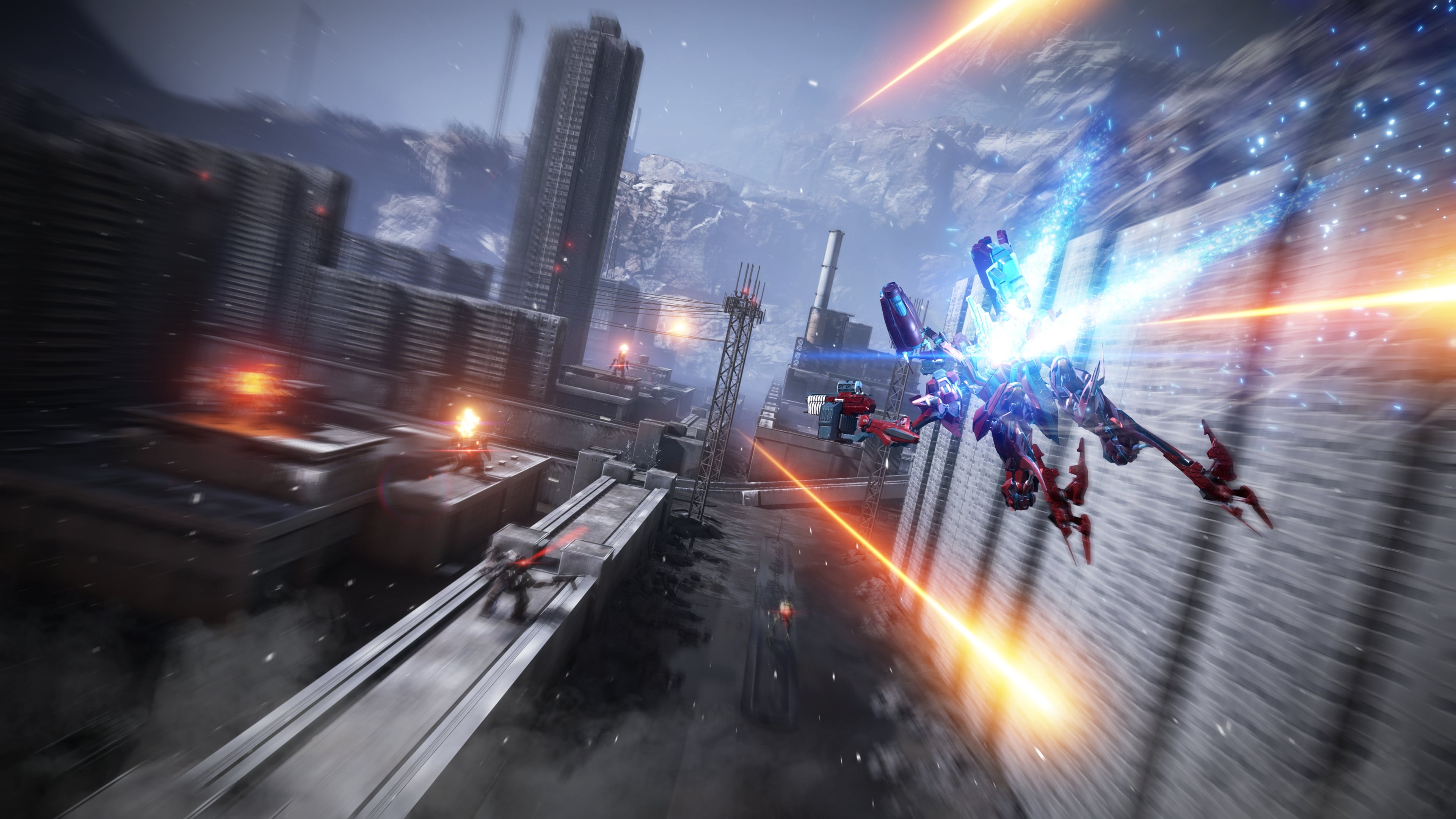
Unfortunately, this sense of scale is something of a poisoned chalice for Armored Core 6. In contrast to previous titles in the series, FromSoftware's latest is filled with asymmetrical boss battles, often against opponents that dwarf your mech with their size and ferocity.
On paper, this could be seen as an attractive proposition. After all, what could be better than even bigger giant robots? Clearly borrowing from the soulsborne playbook, these encounters are tough and unforgiving. The bosses themselves have moves sets that players must memorize and counter before progressing. In a vacuum, this design philosophy can make for a satisfying, if intensive experience that rewards determination and grit - beautifully executed as it was in Elden Ring.
Armored Core 6 is filled with asymmetrical boss battles
However, in the context of Armored Core, this approach feels jarring and out of place. Most obviously, these engagements are at odds with the mech pilot power fantasy central to Armored Core’s appeal. Piloting a big, stompy mech the size of a building feels good. What doesn’t feel good is for your mech to be rendered small and fragile in contrast to an immense piece of industrial machinery or some sort of supercharged prototype killing machine that lacks the hardware limitations of your own vehicle.
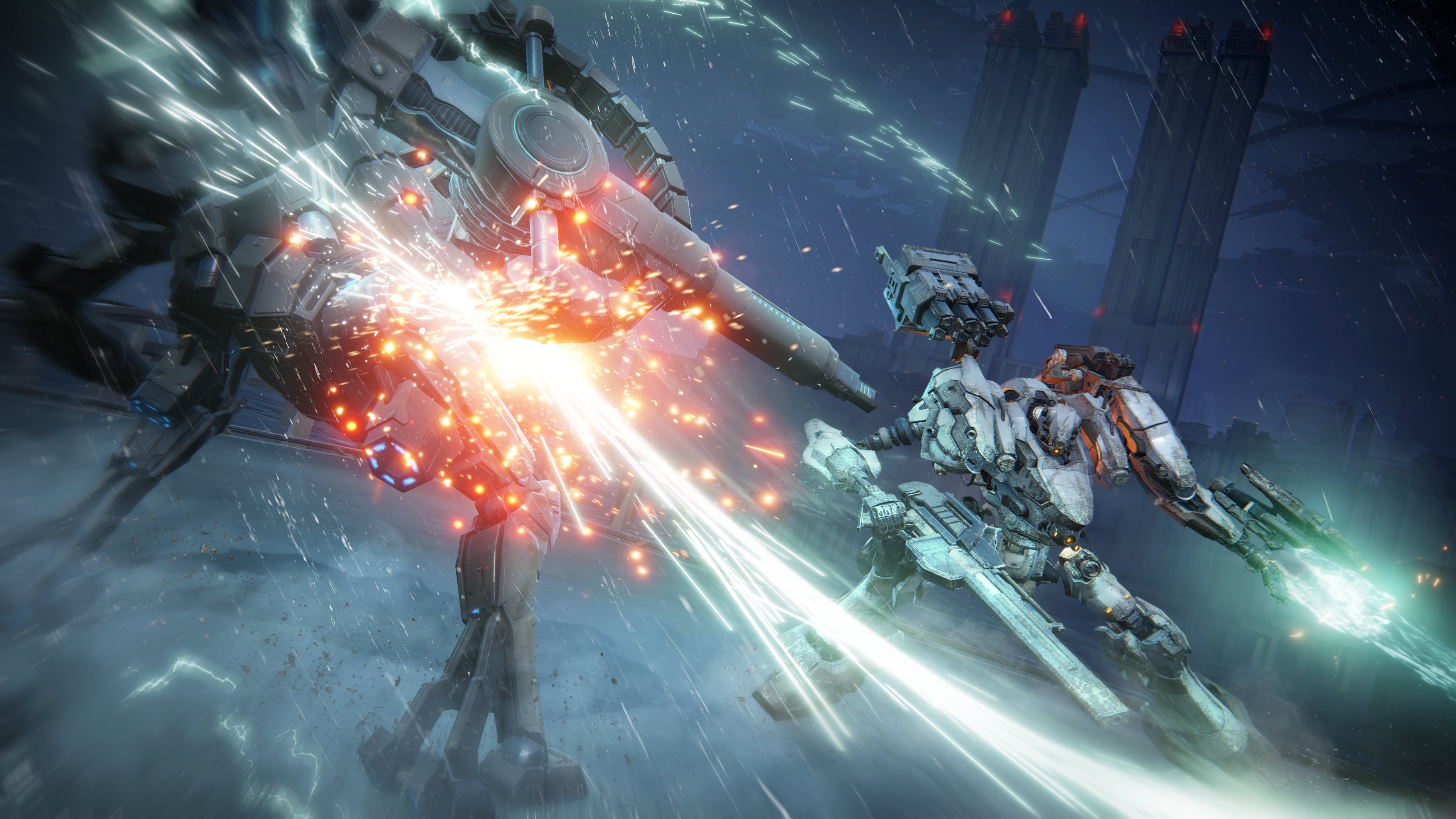
One mission has you defending a missile launch as hordes of weaker enemies attempt to stop you. In my light mech, I dashed around the battlefield, slicing foes to ribbons with glee. The mission culminated in the arrival of a spaceship that required me to boost towards it and blow the bridge to bits with my shotgun - a satisfying end to a thrilling battle.
Additionally, though Armored Core 6 prides itself on “omnidirectional battles”, the environments in which these boss battles take place are often full of invisible walls and other limitations which prevent evasive maneuvers and rapid repositioning. Granted, this is more of a problem for mechs built for agility or aerial combat, but it’s still indicative of a lack of follow-through when it comes to encounter design.
Like their soulsborne cousins, Armored Core titles have a reputation for being tough but fair. However, being crushed to death by a giant metal spider because you had the misfortune to slam into an invisible wall while strafing hardly feels just, especially when it’s possible to perish in a single hit. What elevates the best soulsborne titles is their ability to make your deaths feel fair, which, in turn, gives meaning to the game’s learning curve. Thanks to oddly restrictive level design and bosses having access to asymmetrically powerful abilities that fall well beyond the capacity of your own mech, Armored Core 6: Fires of Rubicon is unable to consistently convey this sense of fairness.
Custom job
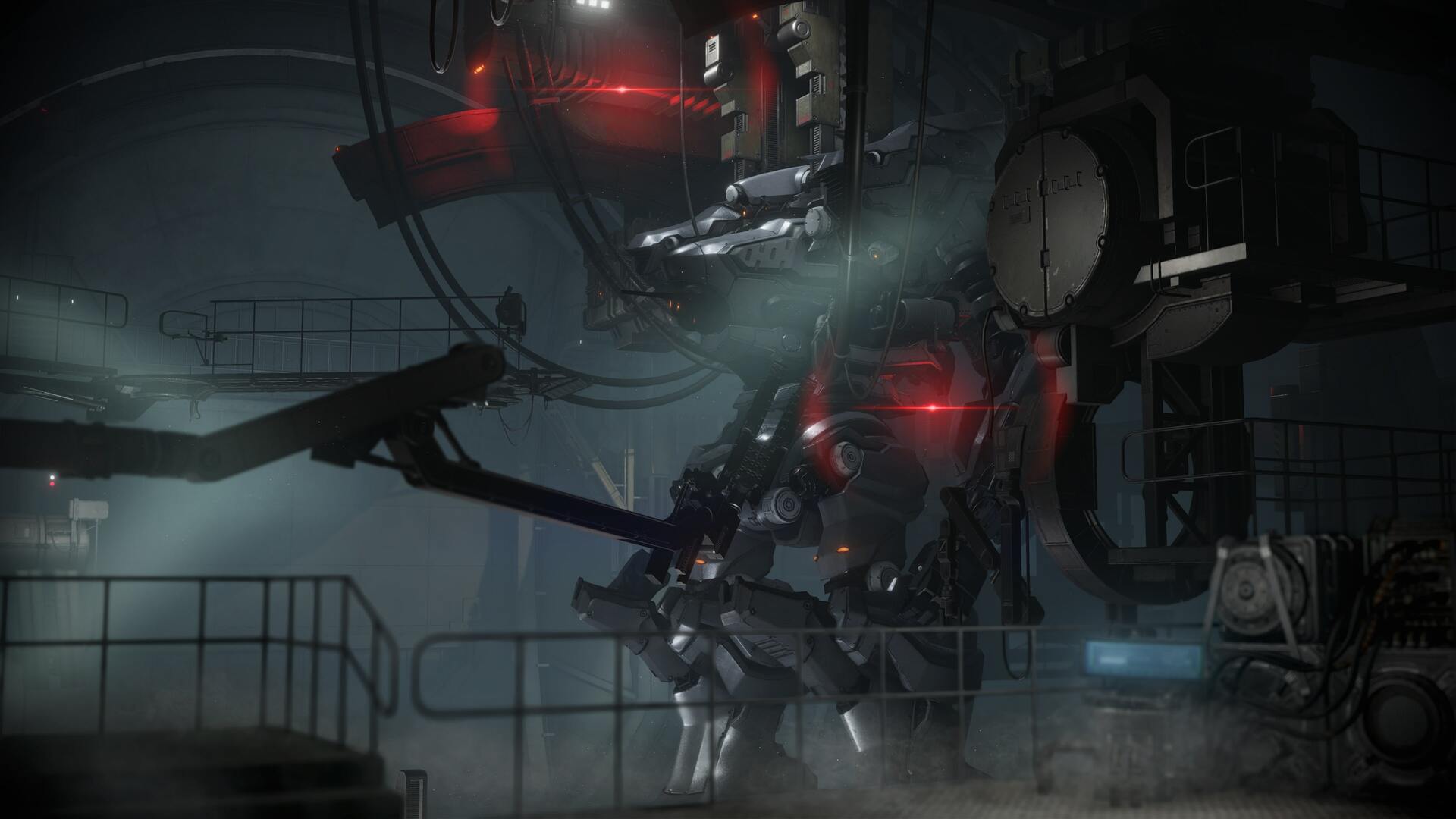
That said, Armored Core 6 has a lot to give when it comes to the mechs themselves. The game’s customization systems are deep and rewarding. In line with previous Armored Core titles, your mech’s frame and internal components can all be chosen to fit your exact specifications. Weapons, too, can be swapped around with ease, letting you pursue a build that truly reflects your playstyle. What’s more, this doesn’t result in subtle, under-the-hood tweaks, but tangible, large-scale changes to mech handling and performance. When put into action, these customization systems are a marvel.
Armored Core 6's customization systems are a marvel
For instance, seeking a faster ride, I swapped out my mid-tier generator for a more specialized counterpart which allowed for rapid energy recharge rates at the cost of low output. In real terms, this would mean easier flying across the battlefield in exchange for having to use fewer energy-intensive parts in my build. The results were astounding. While I had to use some less durable arms and legs to make the new setup work, my mech’s speed and recovery were massively improved, allowing me to change my playstyle and really focus on melee combat. The process of settling on this new build and seeing it in action was a joy from start to finish and is where Armored Core 6 really shines.
Additionally, the game offers equally fleshed-out systems for paint jobs and emblem customization, allowing you to pilot the mech of your dreams. Thanks to all of the different options, there aren’t mech archetypes as such as there’s a spectrum of choices across which you can select a mech that’s all your own.
Iron gladiators
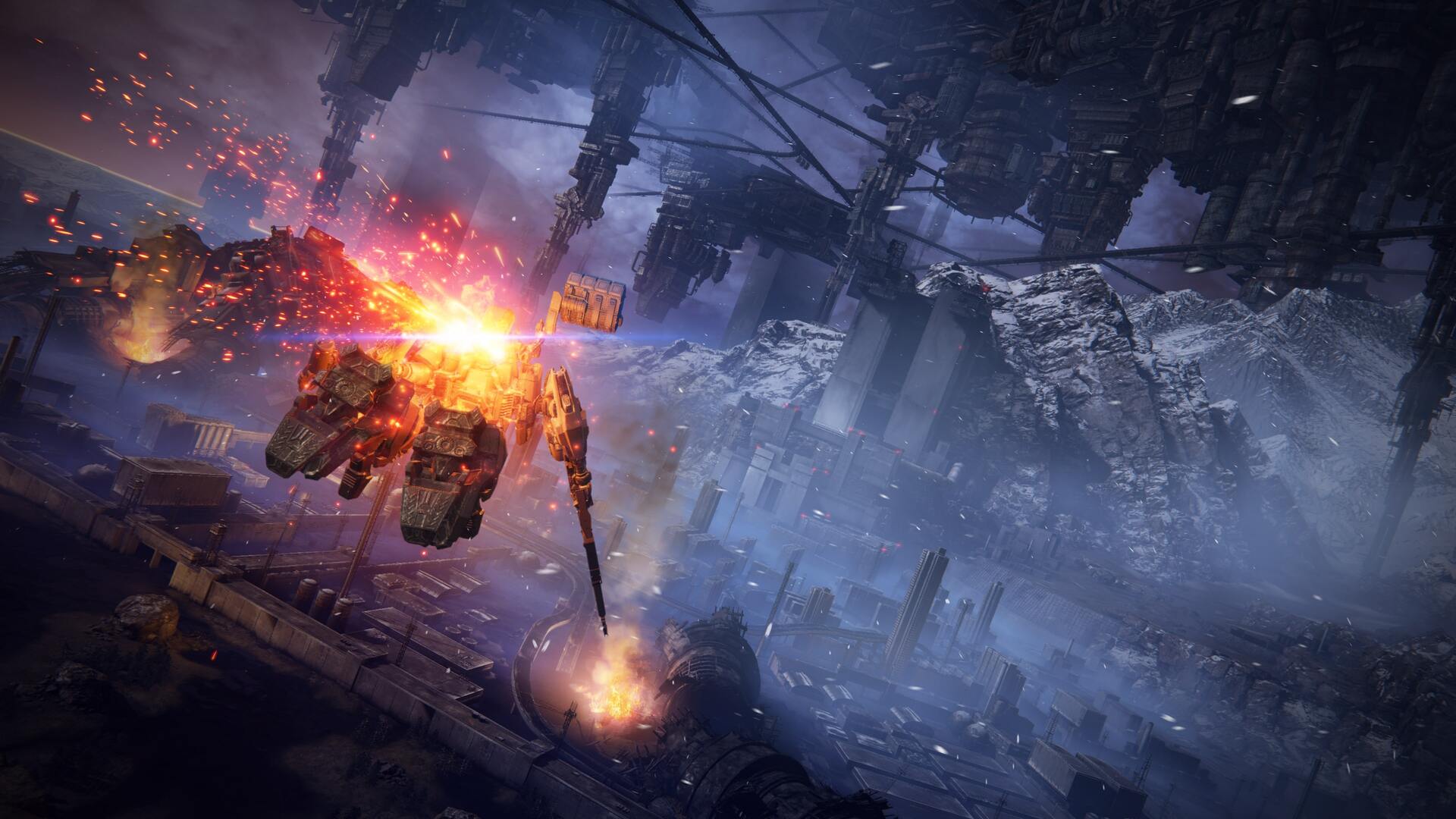
It’s a shame, therefore, that the playground that Armored Core 6 offers for your mech of choice is hit-and-miss in its appeal. For every satisfying mission and joyful battle through a bleak sci-fi locale, there will be another interminable boss fight to take the wind out of your sails. What’s particularly interesting is the contrast between fights with large-scale bosses and fights with rival mechs.
Battles with enemy mechs feel frantic and well-paced. Enemy Armored Cores are satisfying to fight because the engagements feel fair and symmetrical. They’re playing with exactly the same rules set as you are. In theory, you could build an identical copy of their mech, if you so desired - a fact that makes these engagements feel resoundingly fair, even when they end in defeat.
Enemy Armored Cores are satisfying to fight because the engagements feel fair and symmetrical
To that end, some of the most fun I had with Armored Core 6 was in its arena mode, a sort of side mission where you fight progressively tougher mechs as you progress through the story. These boss fights, free of ill-fitting soulsborne asymmetry, were deeply satisfying and left me with a greater appreciation for the interlocking and well-balanced systems that make up Armored Core 6’s customization suite.
However, rather than lean into these areas of strength, Armored Core 6 has crossed a Rubicon of its own, embracing a soulsborne design philosophy that seems out of place next to the consistent and well-crafted systems of combat and design that underpin the game. While there’s certainly a lot to enjoy in Armored Core 6: Fires of Rubicon, the title presents a skewed experience that neither scratches the soulsborne itch nor remains entirely true to the mech piloting power fantasy at the heart of the Armored Core series.
Accessibility
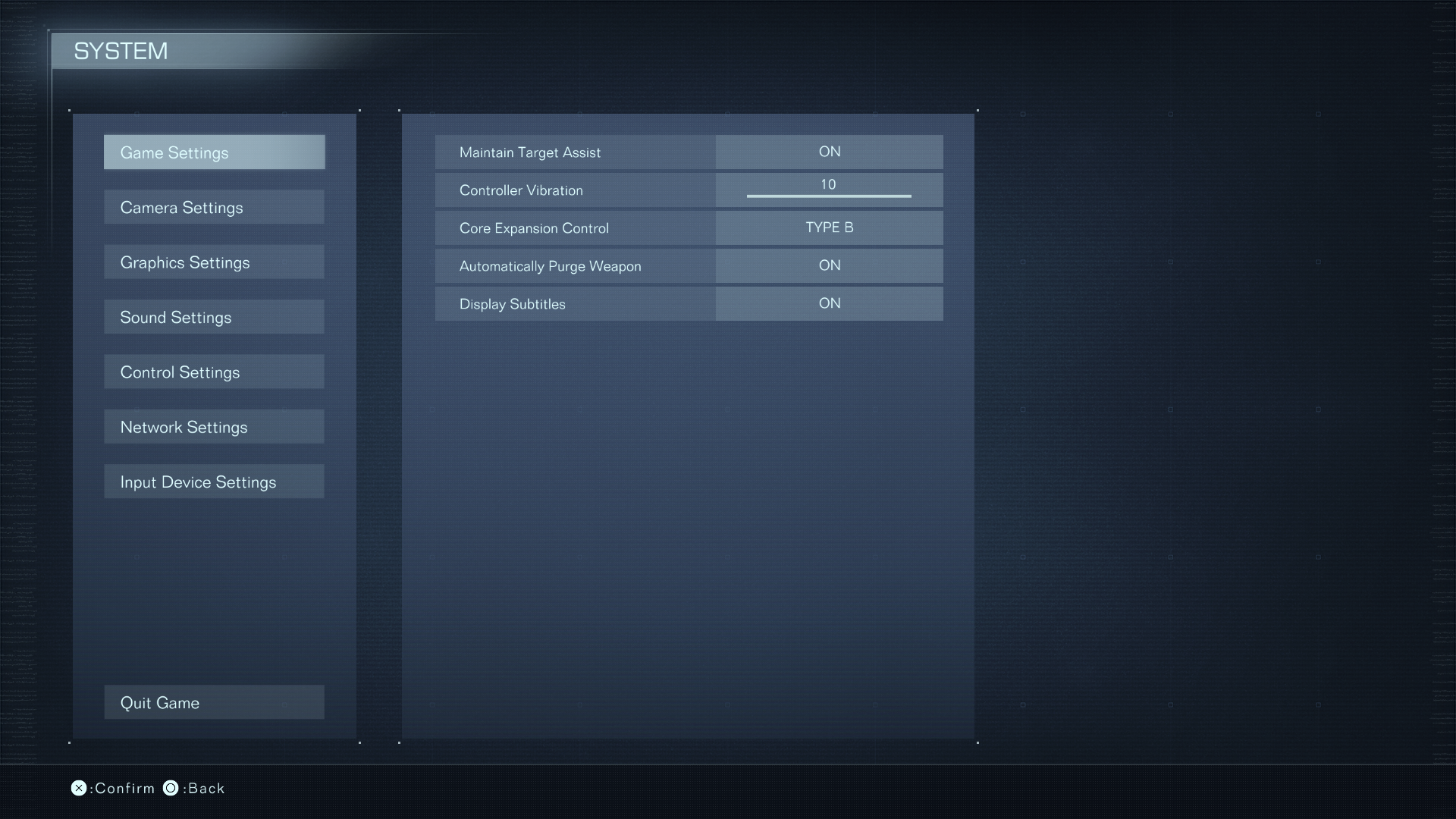
Armored Core 6 is disappointing when it comes to accessibility. With little more than the option to display subtitles, the title offers nothing in the realms of colorblind support or field-of-view sliders. Though the game does offer customizable keyboard mapping, and adjustable controller and mouse sensitivity, those looking for broad accessibility options will be disappointed here.
How we reviewed
I spent 18 hours with Armored Core 6 on PC, playing through majority of the main campaign as well as arena mode. I experimented with a range of different mech builds including tank-tread mechs and quadrupeds. I experimented at length with the mission replay feature as well the mech customization and personalization systems. I was unable to test the game’s online PvP features as the servers were not live at the time of writing.
I’m very familiar with the Armored Core series, having sunk dozens of hours into Armored Core 3, Armored Core 4, and Armored Core 5; experience I relied on when approaching Armored Core 6.
The game was reviewed on a mid-tier curved gaming monitor and played using a DualSense wireless controller.
Looking for an alternative? Our list of the best PS5 games will sort you out, as will our list of the best upcoming games.

An editor and freelance journalist, Cat Bussell has been writing about video games for more than four years and, frankly, she’s developed a taste for it. As seen on TechRadar, Technopedia, The Gamer, Wargamer, and SUPERJUMP, Cat’s reviews, features, and guides are lovingly curated for your reading pleasure.
A Cambridge graduate, recovering bartender, and Cloud Strife enjoyer, Cat’s foremost mission is to bring you the best coverage she can, whether that’s through helpful guides, even-handed reviews, or thought-provoking features. She’s interviewed indie darlings, triple-A greats, and legendary voice actors, all to help you get closer to the action. When she’s not writing, Cat can be found sticking her neck into a fresh RPG or running yet another Dungeons & Dragons game.
